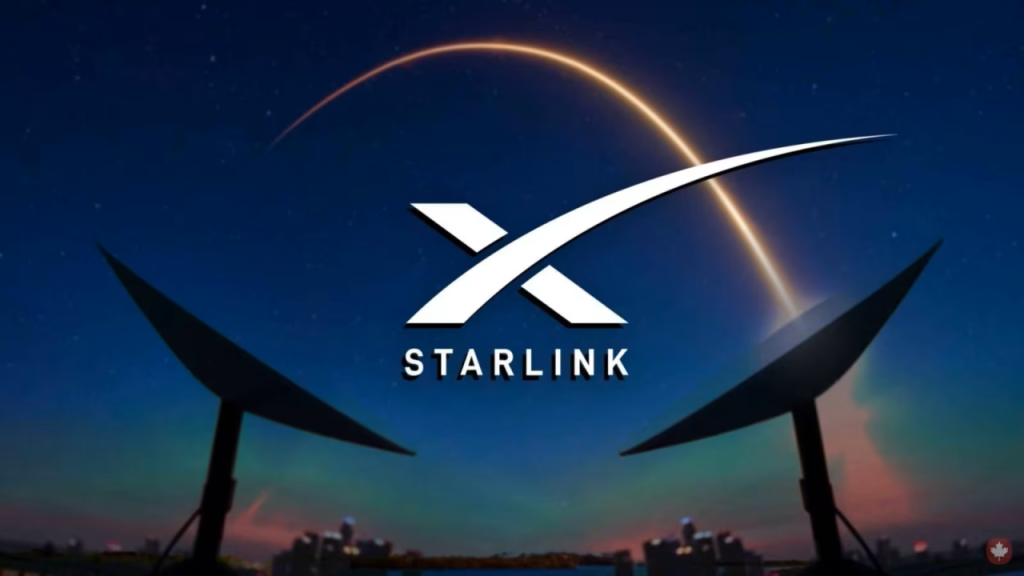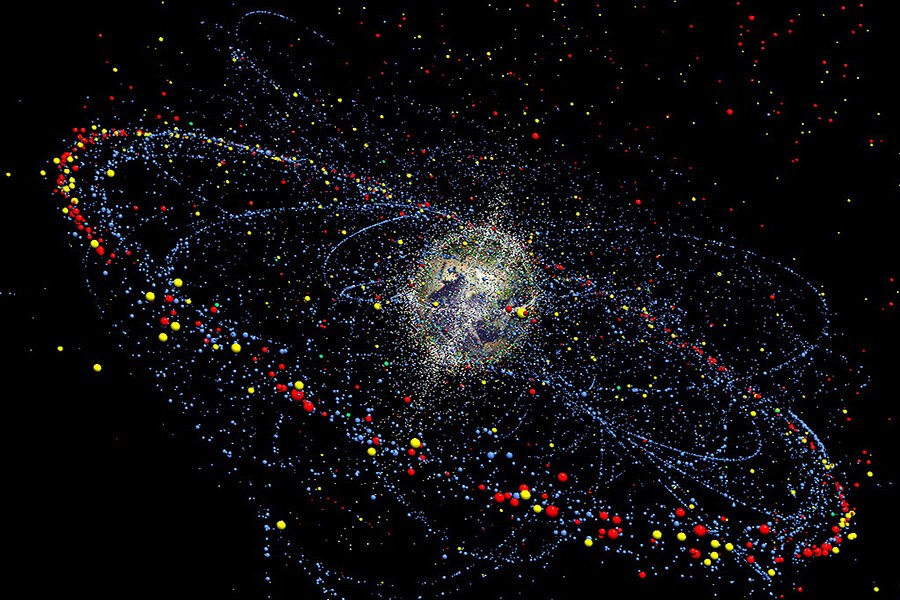In a historic achievement, Elon Musk has dramatically expanded his influence in space, now controlling nearly two-thirds of all active satellites orbiting Earth. This remarkable milestone follows the recent launch of SpaceX’s 7,000th Starlink satellite, further solidifying SpaceX’s dominance in the satellite internet market. Musk’s expanding satellite network is reshaping the global communications landscape, delivering internet access to underserved areas while raising new questions about power and control in space.
The Rise of Starlink: Transforming Global Internet Access

The Starlink network, launched in 2019, has been growing at a rapid pace, with the deployment of approximately three satellites per day. As of today, SpaceX operates 6,370 active Starlink satellites in low-Earth orbit (LEO), outnumbering its closest competitor, OneWeb, by a staggering margin. While OneWeb manages around 600 satellites, Starlink’s massive expansion has positioned SpaceX as a leader in the global satellite industry.
The purpose of Starlink is clear: to provide high-speed, low-latency internet to even the most remote corners of the world. With internet connectivity becoming an essential utility, Starlink aims to bring access to regions where traditional broadband infrastructure is either too costly or impractical to deploy. Starlink’s service is already operational in 102 countries, boasting over three million subscribers, who use ground-based dishes costing around $300 to connect to the satellite network.
As the demand for reliable internet continues to grow, especially in rural and underserved areas, Starlink has positioned itself as a game-changer. Whether it’s providing access to educational resources, supporting small businesses, or enhancing communication during natural disasters, the potential for Starlink’s global network is vast. With Musk’s ambitious goal of deploying up to 42,000 satellites, the sky is the limit for this expanding constellation.
SpaceX’s Journey to Satellite Dominance

SpaceX’s journey to controlling two-thirds of all active satellites is nothing short of extraordinary. The company’s reusable rocket technology has dramatically reduced the cost of launching satellites, allowing for rapid deployment. The frequent Starlink missions have become a routine part of SpaceX’s operations, with satellites being launched nearly every week.
This aggressive expansion has given SpaceX a significant edge over its competitors. Starlink’s closest rival, OneWeb, has faced its own challenges, including a disruption in satellite launches due to geopolitical issues. After the suspension of services with Russia following the invasion of Ukraine, OneWeb became dependent on SpaceX for future launches. Despite these setbacks, OneWeb continues to operate and compete in the satellite internet space, though its capacity remains far behind that of Starlink.
SpaceX’s goal of deploying tens of thousands of satellites represents a vision for a truly global satellite internet network. Once complete, the Starlink constellation will be capable of providing high-speed internet to virtually any point on the globe. This is especially critical for regions with poor or no internet infrastructure, where Starlink can offer a solution that traditional ISPs cannot match.
Starlink’s Global Reach and Expanding Subscriber Base
As SpaceX continues to launch more satellites, Starlink’s coverage has expanded to serve a growing number of customers worldwide. With more than three million subscribers and counting, Starlink’s presence is growing rapidly. The service is available in over 100 countries, including the United States, Canada, parts of Europe, and areas of South America, Australia, and Africa.
Starlink’s $300 ground-based dishes allow customers to connect to the satellite network with ease. For rural households and communities that have long suffered from poor internet access, Starlink’s service is proving to be a lifeline. Users report significant improvements in internet speed and reliability, making it possible to stream content, engage in video conferencing, and access other bandwidth-intensive applications previously out of reach.
However, Starlink’s expansion has not been without its challenges. In some countries, regulatory hurdles and geopolitical considerations have slowed or blocked Starlink’s entry into the market. Nations such as China, Russia, Iran, North Korea, Afghanistan, and Syria have not been included in Starlink’s rollout due to trade restrictions and government policies. Despite these limitations, demand for Starlink services in these regions remains high, with reports of illegally imported equipment being used to access the network in countries like Iran.
Environmental Concerns and Controversies Surrounding Starlink
While Starlink offers numerous benefits, its massive satellite constellation has raised concerns about space debris and environmental impact. With thousands of satellites already in orbit and thousands more planned, critics worry that the growing number of objects in LEO could lead to an increase in collisions and the creation of dangerous space debris. This issue, often referred to as the “Kessler syndrome,” could potentially make certain orbits unusable if not properly managed.
SpaceX has taken steps to address these concerns by designing its Starlink satellites to deorbit and burn up in the Earth’s atmosphere at the end of their operational life. Additionally, the company has implemented advanced tracking systems to avoid collisions with other satellites. However, as the number of satellites in space continues to grow, managing space traffic will become increasingly challenging.
Beyond environmental concerns, the sheer scale of Musk’s control over the satellite market has drawn attention. With SpaceX now operating nearly two-thirds of all active satellites, questions are being raised about the power Musk wields through his satellite empire. Critics argue that the concentration of such a significant portion of the global satellite infrastructure in the hands of a single private entity could have long-term implications for competition, privacy, and global communications.
Musk’s Vision and Its Broader Implications
Elon Musk’s influence extends beyond just satellites. Between his work with SpaceX, Tesla, and social media platform X (formerly Twitter), Musk controls significant elements of modern technology and communication infrastructure. In April 2023, Musk commented that between these ventures, he may have access to more real-time global economic data than anyone else. This statement underscores the broad reach of his companies and the potential power they hold in shaping global industries.
While Musk’s ambitions have largely been met with praise for their technological achievements, they have also sparked debates about the implications of consolidating power and influence over key aspects of the digital and physical worlds.
The Future of Starlink and Global Communications
As SpaceX continues its rapid expansion of the Starlink network, the implications for global communications are vast. Musk’s vision for a planet-wide satellite network could revolutionize internet access, bridging the digital divide and connecting billions of people who currently lack reliable connectivity. However, the challenges associated with space debris, regulatory hurdles, and potential monopolistic control cannot be overlooked.
Looking forward, it remains to be seen how other players in the satellite internet industry, such as Amazon’s Kuiper Project and OneWeb, will respond to SpaceX’s dominance. Increased competition could drive innovation, reduce costs, and make satellite internet more accessible to the average consumer.
Conclusion
Elon Musk’s growing dominance in satellite technology marks a significant shift in the way global internet access is provided. With SpaceX controlling nearly two-thirds of all active satellites and rapidly expanding the Starlink constellation, Musk’s influence over global communications is undeniable. As the Starlink network continues to grow, the future of internet access, space governance, and global communications will be shaped by this revolutionary technology.

